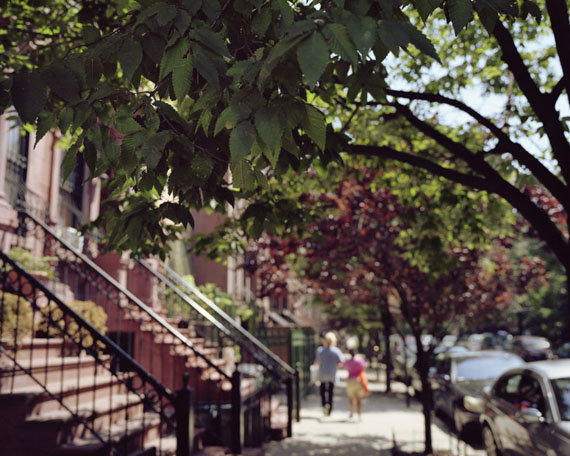
Archival pigment print.
40 x 48 inches
© Dawoud Bey
Dawoud Bey »
Harlem Redux
Exhibition: 8 Sep – 3 Dec 2016
Fri 23 Sep 17:00 - 20:00
Stephen Daiter Gallery
230 W. Superior St.
IL 60654 Chicago
+1-312-7873350
paul@stephendaitergallery.com
www.stephendaitergallery.com
Wed-Sat 11-17
Harlem Redux marks photographer Dawoud Bey’s return to the community that was the site of his first completed project Harlem, USA (1975-1979). Before he was born, Bey’s parents met and lived in Harlem – this family history served as the inspiration for this work. Some forty years later, the artist returned to photograph the neighborhood, a response to a sense that its unique character and identity are in flux. In these new images Bey shows Harlem in transition, once vibrant and celebrated, giving way to a more gentrified and homogenized present. Intent on depicting this change as it takes place, Harlem Redux seeks to answer the question – What does a community look like while undergoing such a dramatic transformation?
“I returned to visualize a Harlem in the midst of profound change. Due to increasing gentrification, demographic shifts are permanently altering the social and physical landscape, bringing both new amenities and population displacement, resulting in a radical reshaping of the built environment.”
The large scale color photographs in Harlem Redux mark a departure for Bey, who has long been noted for his portrait work. The photographs include urban landscapes and subtle, yet poignant details of the changing environment – together they reveal a much deeper truth: “For this project I’ve adopted a more open-ended strategy for making the work. Rather than beginning with a particular formal or conceptual framework in place, I have let the circumstances themselves guide my choices and ultimately shape the work. This has resulted in a varied group of pictures that work together to form a larger narrative about absence, memory, change, and loss. Harlem is a community that is increasingly defined by a sense of “erase-and-replace,” wherein pieces of social and cultural history, along with memory itself, are routinely being discarded, with only the nostalgic residue of that memory being evoked.”